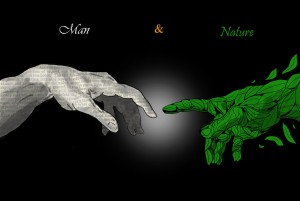Towards a Hyperspace
Advancement essentially requires a point of reference. This I believe can be derived with a deep understanding of the past, challenges of the present and needs of the future.
A human being is fundamentally yet another living organism in nature, which to a large extent has adapted itself to the various force and elements within nature. Dubbed the “superior being” man has since time immemorial developed methods of sustaining himself by means of a symbiotic existence within nature. In the recent past however, this relationship was disrupted owing to various socioeconomic changes as well as technological advancements which brought about an utopia of “boxed comfort”. Over the years, this box has in turns produced a being that is inseparable from technology but at the same time one that has been undernourished due its disassociation with nature. Given this context, I believe advanced architecture stepped in to bridge this gap and continues to evolve towards achieving a symbiotic relationship with today’s high-tech being and his natural environment.
Text analysis:-
Talking about “Conditioned Outdoor room” or gardens Rudofsky stresses on the need to adapt to nature and not isolate oneself from it. In his text he describes how the importance and functions of a house garden has changed over the history, taking examples of Pompeii to Japanese garden to lawns in an average north American house. He portrays gardens as a kind of in-between space; between the built(man-made) and the un-built(natural) environments where Man can be at his comfortable level with both. He delineates the possibility of using gardens as a buffer to harsh climate through an environmental relationship with the house and the outdoor. The advantages of positional relationship of “enclosing” garden walls with that of house and a metaphorical relationship(in terms of function) of a less celebrated “non-utilitarian” wall with that of a tree are a few other insights of the text. This text however, completely overlooks the reality that today man is inseparable from technology which for the most part is at conflict with nature. This brings the need for a more holistic definition of “conditioned outdoor room” the relation perhaps could be a disturbed one. Also the inevitable questions; if such a “room” is possible in every dwelling given today’s urban congestion,pollution and price of land.
House study:-
In more recent projects such as Studio House (by F451 Arquitectura),although the idea of a definite “conditioned outdoor room” as suggested by Rudofsky’s relatively older text is absent, nevertheless the concept of using natural environment to attain human comfort is evident. The building, through its functional organization, orientation and location on site is in an environmental relationship with its surrounding. The building, like a well adapted living organism cuts on the loss, stores and takes advantage of the available energy by being partially underground, through storage of rainwater and use of North lights respectively.
Conclusion:
As a possible conclusion we should rather strive to incorporate the effect or benefits of a “conditioned outdoor room” in a human habitat rather than get fixated purely on the more primitive idea of a “garden” itself.
The notion of a “hyperspace” where human beings, nature and technology does not merely coexist but forms a symbiotic relation with each other.
Possible Research topic:
To explore if human relationship with environment is possible in a so called “extreme/harsh environment” taking into consideration technological advancement and if so, to what extent could this relationship be symbiotic.

